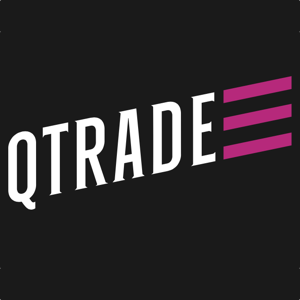Canadian Couch Potato’s approach to successful investing is excellent for investors that are looking to manage their own investments. The website recommends three critical elements to investment success:
- Diversify your investments broadly
- Keep your costs of investing low (this includes MERs as well as any advisory fees)
- Standing by your initial investment plan over a long-term horizon
Although Canadian Couch Potato is not an asset manager, the website recommends low-cost ETF solutions from large investment managers such as Vanguard, Blackrock, and BMO.
Low-cost solutions can save you a large amount of money over time, but always be mindful of what is included within an investment portfolio.
We’ll provide a Canadian Couch Potato review below, and discuss some of the features of the portfolios that the website recommends.
Personal Finance and Investment Planning
One of the foundational principles behind the Canadian Couch Potato’s approach to investing is the importance of personal finance and effective investment planning.
While the specific portfolios and ETF recommendations below provide solid options for Canadian investors, the overarching goal should be aligned with an individual’s financial situation and future aspirations.
Before delving into any of the portfolio options, an investor must understand their current financial status. This includes assessing income, expenses, debts, and other financial commitments.
Only with a clear understanding of one’s financial picture can they then tailor their investments to meet their specific goals. Whether you aim to purchase a home, fund your child’s education, retire comfortably, or achieve any other financial milestone, your investments should be aligned accordingly.
Canadian Couch Potato emphasizes the significance of sticking to an initial investment plan over the long term.
Canadian Couch Potato Review (DIY ETF Portfolios)
1. 100% Equity ETF Portfolios

- Vanguard All-Equity ETF Portfolio (VEQT)
- iShares Core Equity ETF Portfolio (XEQT)
- BMO All-Equity ETF (ZEQT)
On the highest end of the all-in-one portfolio risk spectrum are 100% equity portfolios. These all-in-one options recommended by Canadian Couch Potato are all portfolios containing several other ETFs within it.
By having a one-ticket solution that is diversified across several equity ETFs covering different geographical regions, the one-ticket solution becomes incredibly well diversified.
All of the three 100% equity ETF portfolios recommended by Canadian Couch Potato have very low MERs and have a good amount of assets under management.
At most brokerages across Canada, a 100% equity portfolio is considered medium risk.
If you are looking to lower your risk below that of a full equity portfolio, the following all-in-one ETF portfolios add fixed income to their holdings. This helps to reduce overall volatility and also improves the portfolio’s yield.
2. 80% Equity 20% Fixed-Income ETF Portfolios

- Vanguard Growth ETF Portfolio (VGRO) – 52-Week Low: $28.9
- iShares Core Growth ETF Portfolio (XGRO)
- BMO Growth ETF (ZGRO)
A risk step below the 100% equity portfolios are the 80-20 portfolios offered by the same three investment managers. Similar to the 100% equity portfolios, these all-in-one portfolios also contain several underlying ETFs.
This time, 20% of the overall investment is dedicated to fixed income, through fixed-income ETFs. Bond-holders are among the first to be paid in the event of a bankruptcy, making them safer investments.
Again, all of the three all-in-one portfolios recommended by Canadian Couch Potato have very low MERs and have a good amount of assets under management.
As mentioned before, a full stock portfolio is usually considered medium risk. An 80-20 portfolio will also likely be considered medium risk, as the allocation to fixed income is not high enough to bring it to a low-to-medium risk rating.
The list continues with portfolios that have an even higher allocation to fixed income and increasingly lower volatility.
3. 60% Equity 40% Fixed-Income ETF Portfolios

- Vanguard Balanced ETF Portfolio (VBAL)
- iShares Core Balanced ETF Portfolio (XBAL)
- BMO Balanced ETF (ZBAL)
Next up are the balanced, or 60-40 portfolios offered by Vanguard, iShares, and BMO. Continuing in the same fashion, the 60-40 portfolios are also funds-of-funds, holding several underlying ETFs for diversification.
With 40 of the overall portfolio invested in fixed income, bonds are now a significant portion of your total investment. While they are considered safer in terms of volatility, keep in mind that they are impacted by several factors.
The first major factor impacting bond prices is any fluctuation in interest rates. If interest rates are expected to rise, bond prices typically fall (and vice versa).
A second factor affecting corporate bonds, or bonds issued by companies, is a potential credit downgrade. If a company is evaluated as being riskier than it was before, its bonds will typically drop in value.
As before, the three portfolios all have very low MERs and have a good amount of assets under management.
With a 60-40 portfolio, its risk rating should be considered a low-to-medium risk, as the allocation to fixed income is significant.
4. 40% Equity 60% Fixed-Income ETF Portfolios

- Vanguard Conservative ETF Portfolio (VCNS)
- iShares Core Conservative Balanced ETF Portfolio (XCNS)
- BMO Conservative ETF (ZCON)
Next up are the more conservative portfolios offered by the three money managers. Like the rest on our list, the 40-60 portfolios are also funds-of-funds. They hold several underlying ETFs for diversification.
With over 50% of your investment now held in fixed income, bonds are now the main component of your investment portfolio. Be mindful that bonds are generally very sensitive to interest rate fluctuations or credit downgrades.
All three 40-60 portfolios come with the same features as before. They are all offered at a relatively low MER and have a substantial amount of assets under management.
Although some investment managers label a 40-60 portfolio as being low-risk, the equity allocation is still significant enough to warrant a low-to-medium risk rating, in our opinion.
With a 60-40 portfolio, its risk rating should be considered low-to-medium risk, as the allocation to fixed income is significant.
5. 20% Equity 80% Fixed-Income ETF Portfolios

At the 20% equity and 80% fixed income allocation, only Vanguard and iShares offer all-in-one portfolio solutions. These two options are again funds-of-funds and hold several underlying ETFs, in this case mainly bond ETFs.
With 80% of your total investment now allocated to bonds, it’s important to seriously consider interest rate risks or credit downgrade risks.
The portfolios from Vanguard and iShares both come at low MERs as before and have a good level of assets under management.
An 80% allocation to fixed income warrants a low-risk rating in most cases. Be mindful that high-risk bonds do exist but are unlikely to be included in all-in-one portfolio solutions such as these.
Up next is the lowest risk option recommended by Canadian Couch Potato – the all-fixed-income portfolios.
6. 100% Fixed-Income ETFs

- Vanguard Canadian Aggregate Bond Index ETF (VAB)
- iShares Core Canadian Universe Bond Index ETF (XBB)
- BMO Aggregate Bond Index ETF (ZAG)
Last on Canadian Couch Potato’s model portfolio list are these three bond ETFs offered by the same investment managers as before. These ETFs are purely bond ETFs and are not considered part of each of the three managers’ all-in-one lineup.
These 100% bond ETFs are great for low-risk investors but face the same fixed-income risks that we have mentioned before. All three ETFs are offered at low MERs and have a good AUM.
These bond ETFs, unlike the other portfolios recommended by Canadian Couch Potato, hold bonds directly. They do not invest in any underlying ETFs and are not funds-of-funds.
Canadian Couch Potato recommends combining one of these three all-fixed-income ETFs with one of the three all-equity ETFs from further above, in the event that you are looking for a different asset allocation than what all three managers offer.
How Many ETFs Should I own?
The number of ETFs to include in your portfolio depends on the number of underlying holdings that the ETF has. An ETF can hold just several positions or it can hold hundreds.
Funds-of-funds like most of the ones covered above give you access to several ETFs within one main ETF. In this case, how diversified you really are depends on how many underlying holdings are held within each underlying ETF.
In the case of the above portfolio solutions, each all-in-one solution is likely well diversified enough to justify holding just one of the solutions in your portfolio. Remember to be mindful of your goals and risk tolerance before making a decision to invest.
How Do I Diversify A Portfolio in Canada?

Diversification usually has two forms: diversifying within an asset class and diversifying across asset classes.
Diversifying within an asset class refers to holding more positions within the same asset classification. A good example would be purchasing more than just one stock to diversify your stock portfolio.
Diversifying across asset classes means investing in several assets with different features. Some examples can include adding bonds, alternatives, or real estate to an all-stock portfolio.
If you are looking to do a good job of diversifying your portfolio, it is important to consider how correlated investments are between themselves.
A portfolio of just oil and gas companies is likely less diversified than a portfolio that invests across multiple sectors and countries.
How to Buy Canadian Couch Potato’s DIY ETF Portfolios
The cheapest way to buy ETFs is from discount brokers. My top choices in Canada are:

- 105 commission-free ETFs to buy and sell
- Excellent customer service
- Top-notch market research tools
- Easy-to-use and stable platform

- Stock and ETF buys and sells have $0 trading fees
- Desktop and mobile trading
- Reputable fintech company
- Fractional shares available
To learn more, check out my full breakdown of the best trading platforms in Canada.
Conclusion
Canadian Couch Potato makes a lot of great recommendations for investors that are looking to take care of their own investments.
The focus on low fees, diversifying properly, and sticking to an investment plan for the long term is something that should always be followed.
Although Canadian Couch Potato does not manage the portfolios recommended on the website, they are all managed by well-known money managers in Canada: BMO, Blackrock, and Vanguard.
Remember to always follow basic investment principles before purchasing any investments in your accounts. This includes considering your goals and objectives, risk tolerance, and investment time horizon, among several other things.





